Geschichtsblätter: 1580 Malcontents taking Kortrijk
Detail
Date: 27 February 1580
Dimensions (not including margins): 21 x 27,5 cm
Condition: Very good. Strong paper and wide margins. Centre fold as published.
Condition rating: A+
Verso: blank
Text at bottom: in German
In stock
Hogenberg shows the Malcontents taking Kortrijk (Courtrai) on 27 February 1580
When the Calvinists grabbed power in several Flemish and Brabant cities, like Ghentt, Bruges and Antwerp and started to repress Catholics in those cities, a number of local Catholics opposed such actions and sighted with the Spanish. So, the Malcontents became an independent faction of Catholic nobles in Hainaut and Artois who openly opposed William of Orange in the Union of Brussels of the Habsburg Netherlands during the period after the adoption of the Pacification of Ghent. They became known as “Malcontents”, when they seized the city of Menen on 6 September 1578.
Later they formed the Union of Arras in January 1579 and negotiated a separate peace with the Spanish Crown, represented by the royal governor-general Alexander Farnese, Duke of Parma, in the form of the Treaty of Arras, signed on 17 May 1579.
Groningen, in the North, became a stronghold of the Malcontents. Also Tournai surrendered to the Malcontents on 29 November 1581.
Since they could not cope with the rebels on their own strength, they were in fact integrated in the Spanish forces.
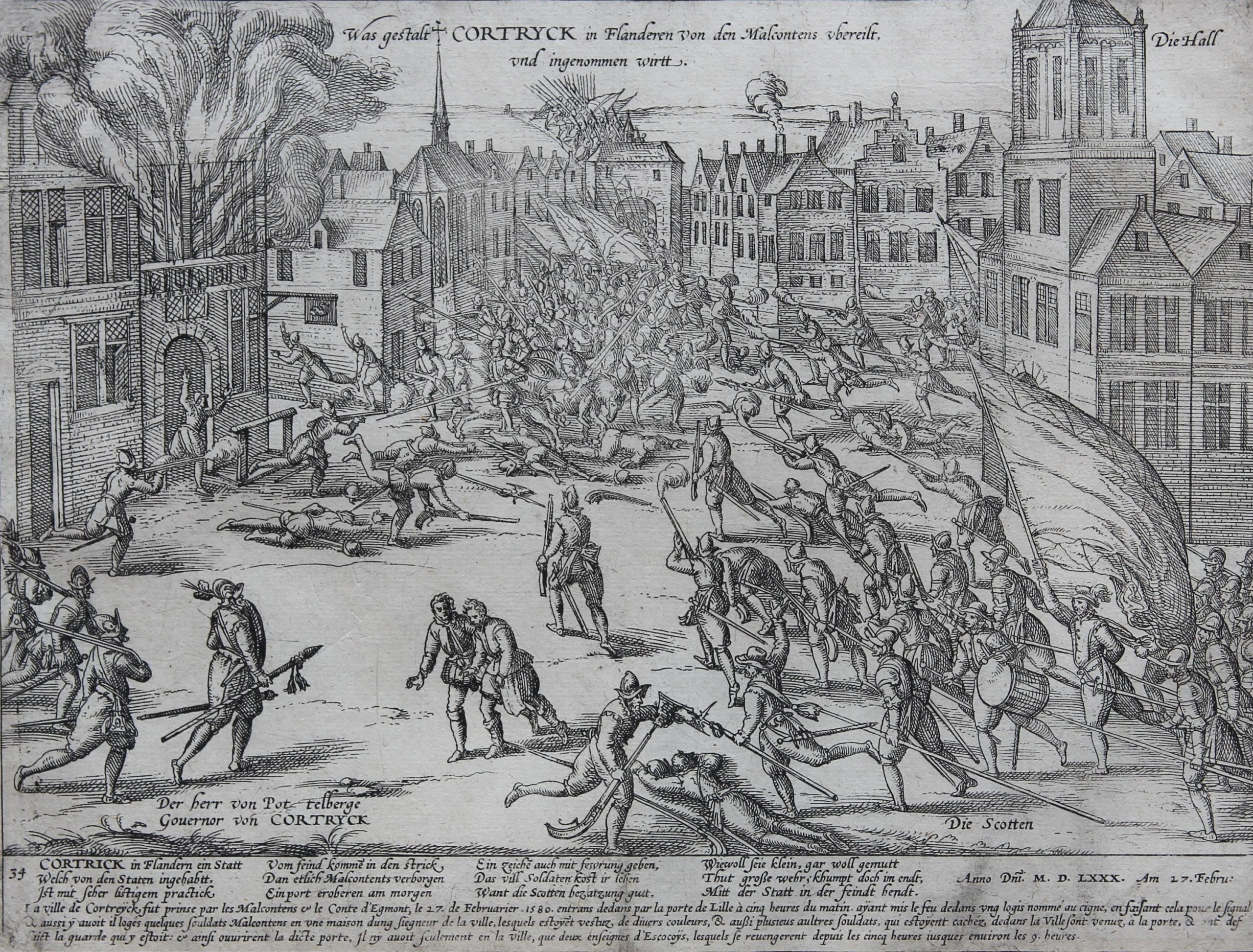
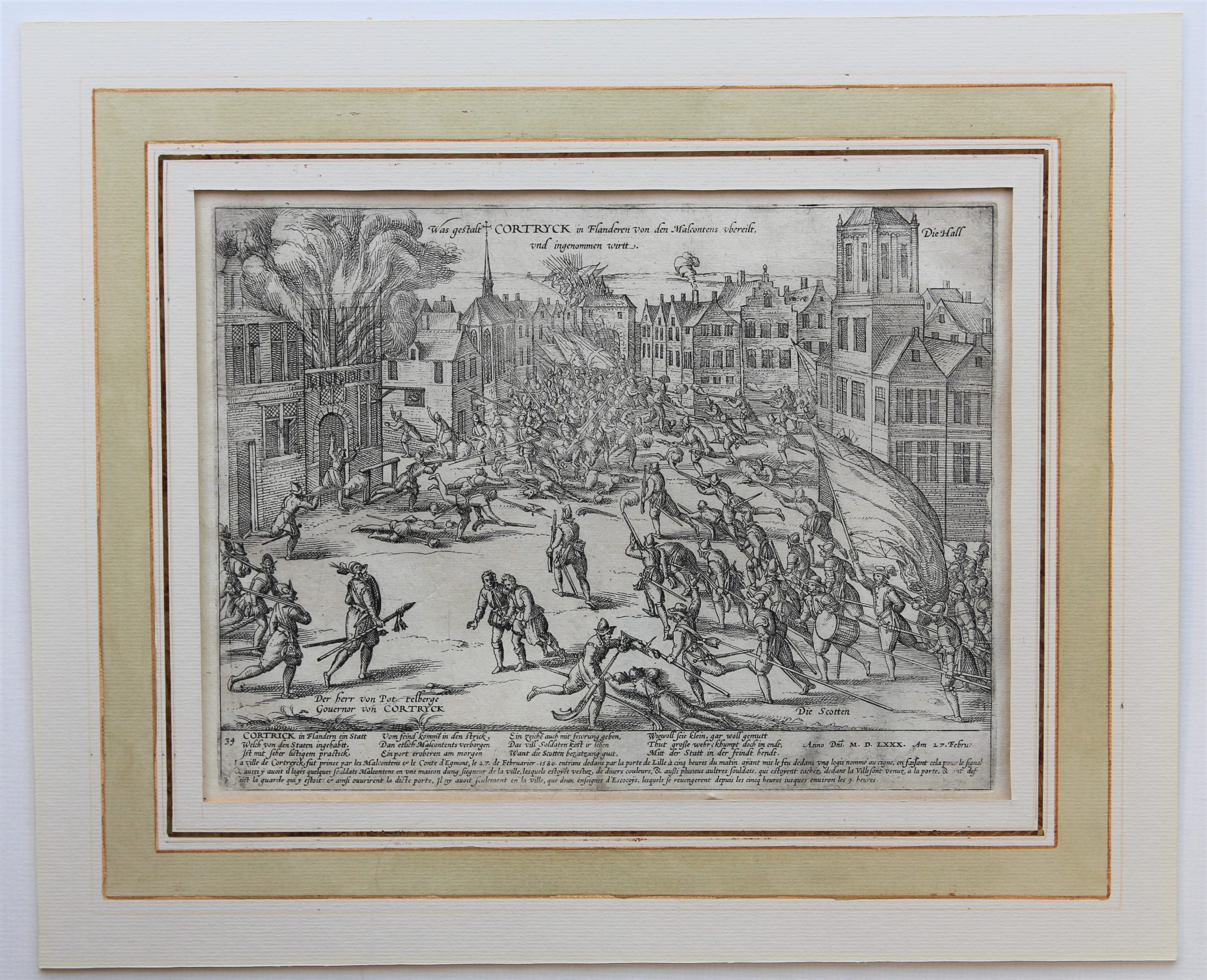
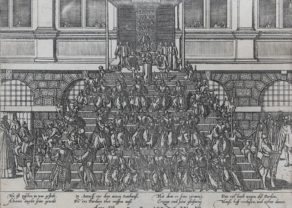
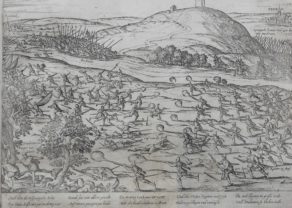
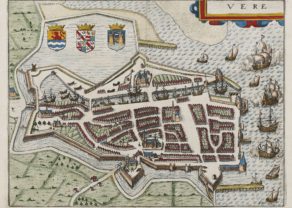
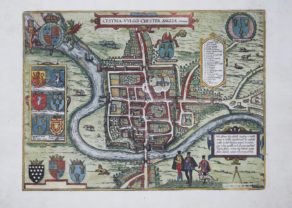
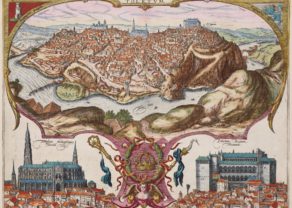
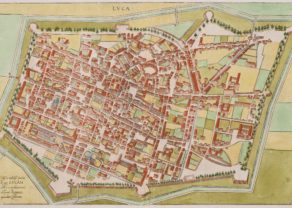
Hogenberg and his Geschichtsblätter (news prints)
The publication of news prints was already in vogue in the 16th century before Hogenberg published his well-known Geschichtsblätter. In printing houses in Rome (Lafreri) and Venice (Gastaldi), the cartographers also published these such news prints. The preferred topics were then-current political or military images. Publishing news prints actually went hand in hand with the publication of maps.
Hogenbergs Geschichtsblätter are a collection of several hundred history papers that Frans Hogenberg and his son Abraham published between 1569 and 1637. The central theme is the Eighty Years’ War (1568 – 1648), but some views also show the French Religious Wars (1559 – 1573) and the English dynastic disputes. The Geschichtsblätter illustrate in an almost photographic way an act of war with a German caption at the bottom, sometimes in verse form, dating the fact. They provide both a visual and a narrative picture of the evolution of the war. The different engraving styles show that several engravers contributed to this work in the studio of the Hogenberg family. The Geschichtsblätter were sold loose-leaf and were popular.
Several editions of the Geschichtsblätter are known with varying numbers of pages and varying comments.